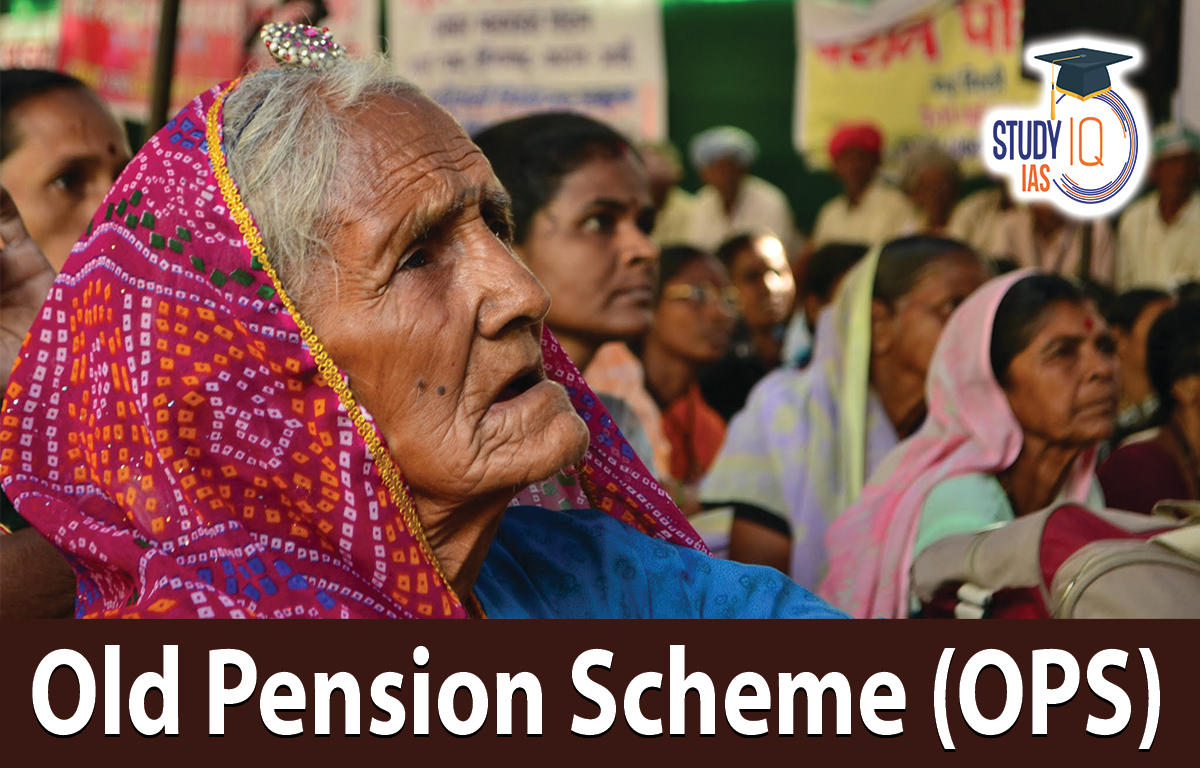Table of Contents
About Old Pension Scheme News
In the Old Pension Scheme, upon retirement, employees receive 50 percent of their last drawn basic pay plus dearness allowance or their average earnings in the last ten months of service, whichever is more advantageous to them.
A ten-year service requirement should be met by the employee.
Under Old Pension Scheme, employees are not required to contribute to their pensions and pension was guaranteed.
Old Pension Scheme of New Pension Scheme (NPS)
- In 1998, the Union Ministry of Social Justice and Empowerment commissioned a report for an Old Age Social and Income Security (OASIS) project.
- Finding: Just 3.4 crore people, or less than 11 per cent of the estimated total working population of 31.4 crore, had some post-retirement income security.
- Recommend: Individuals could invest in three types of funds — safe (allowing up to 10 per cent investment in equity), balanced (up to 30 per cent in equity), and growth (up to 50 per cent in equity).
- To Reforming India Pension System, for the first time, New Pension System was proposed by the Project OASIS report.
- New Pension Scheme (NPS) for Central government employees was notified on December 22, 2003.
- It was made mandatory for all new recruits joining government service from January 1, 2004.
- The defined contribution comprised 10 per cent of the basic salary and dearness allowance by the employee and a matching contribution by the government.
- In January 2019, the government increased its contribution to 14 per cent of the basic salary and dearness allowance.
Concerns Associated with Old Pension Scheme in India
- Bad Economics:
- Pension Liability Remained Unfunded: There is no corpus specifically for pension, which would grow continuously and fund for pension.
- Inter-Generational Equity Issues: Current generation of taxpayers are paying for pension bill of those who joined government service before 2004 but are contributing to the 10 per cent contribution the state governments have been making for those who joined from January 1, 2004.
- Unsustainable: Pension liabilities would keep climbing since pensioners’ benefits increased every year; like salaries of existing employees, pensioners gained from indexation, or what is called ‘dearness relief’ (the same as dearness allowance for existing employees).
- Better health facilities would increase life expectancy, and increased longevity would mean extended payouts.
- Burden on Exchequer: Over the last three decades, pension liabilities for the Centre and states have jumped manifold.
- In 30 years, the cumulative pension bill of states has jumped to Rs 3,86,001 crore in 2020-21 from Rs 3,131 crore in 1990-91.
- Bad Politics:
- Funding a small number of former government employees by utilizing a chunk of taxpayers’ money cannot be good politics.
- Pension payments by states cost away quarter of their own tax revenues, thus only small percentage is left for capital expenditure, which is essential for development and overall growth of state.
- Pension cater to small population: Majority of voters still remain out of government pension ambit, as a proportion of the total workforce of 900 million, India still have only 2.2 per cent of people employed in the public sector.

Old Pension Scheme Reason for Opting
- Short-term gains by Government: They save money since they will not have to put the 10 per cent matching contribution towards employee pension funds.
- Advantage for employees: It will result in higher take-home salaries, since they too will not set aside 10 per cent of their basic pay and dearness allowance towards pension funds.





















 WhatsApp
WhatsApp